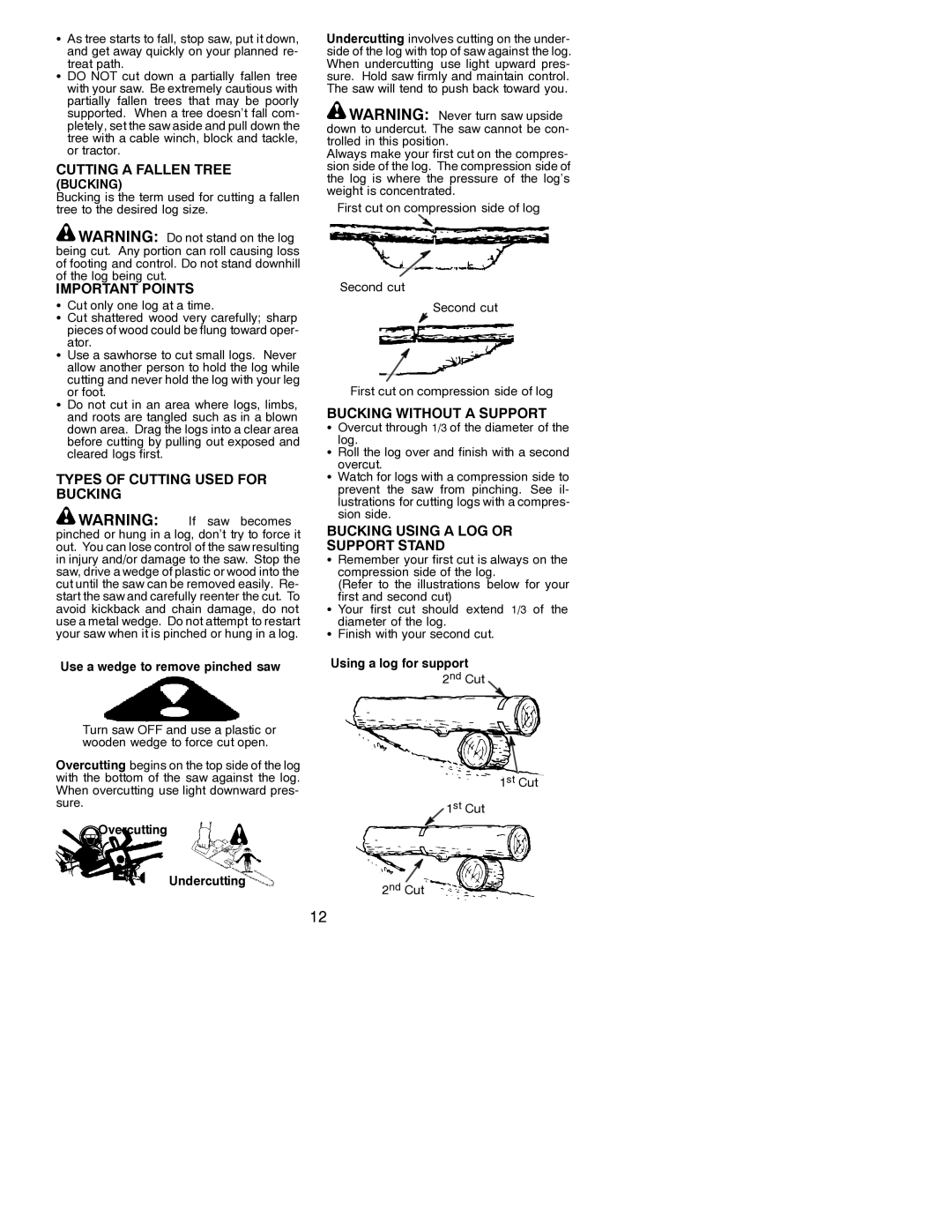530088308 specifications
The Poulan 530088308 is a high-quality replacement chain designed to deliver exceptional performance for chainsaw enthusiasts and professionals alike. This chainsaw chain is engineered for reliability and durability, ensuring users can tackle various cutting tasks with ease and efficiency.One of the standout features of the Poulan 530088308 is its compatibility with a wide range of chainsaw models. This versatility makes it an ideal choice for those who own multiple saw brands. The chain is designed with a pitch of 3/8 inches and a gauge of .050 inches, which provides a perfect balance of cutting power and precision. The chain length typically includes 50 links, making it suitable for many chainsaws that require similar specifications.
The technology behind the Poulan 530088308 includes high-performance materials that enhance cutting speed and efficiency. The chain is crafted from high-quality steel, which not only contributes to its longevity but also helps maintain sharpness even after numerous uses. The precision-ground teeth of the chain ensure smooth and consistent cutting action, allowing users to produce clean cuts in various wood types, including hardwoods and softwoods.
Another critical characteristic of this chainsaw chain is its ease of installation and maintenance. The design facilitates quick and straightforward replacement, enabling users to get back to work in no time. Additionally, the Poulan 530088308 is engineered for optimal lubrication, which decreases wear and tear, prolonging the life of both the chain and the chainsaw itself.
The safety features incorporated into the design of the Poulan 530088308 cannot be overlooked. The chain is designed to reduce kickback, ensuring a safer cutting experience. For those who prioritize safety while operating their chainsaws, this aspect is critical in preventing accidents and injuries.
In conclusion, the Poulan 530088308 chainsaw chain stands out due to its compatibility, high-quality materials, precision engineering, and user-friendly design. Whether you are a professional woodworker or a home maintenance enthusiast, investing in this replacement chain can enhance your cutting efficiency and provide a reliable solution for your chainsaw needs.

